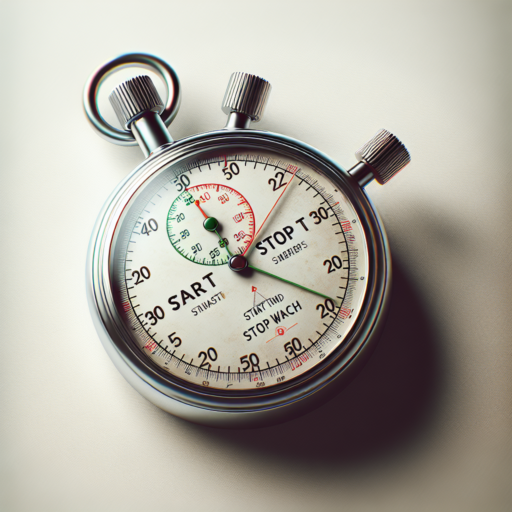How to do a 1 mile time trial?
Conducting a 1 mile time trial is an effective way to gauge your running speed and efficiency. This straightforward process involves more than simply hitting the track and running as fast as you can. To maximize the potential of your time trial, implementing a calculated approach is essential.
Preparing for the Time Trial
Begin by selecting a day with favorable weather conditions to ensure that external factors don’t impair your performance. It’s also crucial to find a flat, measurable path for accuracy. Preparation should also include a comprehensive warm-up consisting of dynamic stretches and a light jog to prime your body for the exertion to come.
Executing the Time Trial
When it’s time to start, focus on maintaining a steady, sustainable pace that you feel you can hold throughout the entire mile. It’s common to start too fast, so pay careful attention to your body and pace. Remember, the goal is to record your best possible time under consistent effort across the distance. Halfway through, evaluate your energy levels and adjust your speed if necessary to finish strong without burning out prematurely.
Post-Trial Recovery
After completing the mile, a cool down is just as important as the warm-up. Incorporate a gradual jog that transitions into walking, followed by static stretches. This recovery phase is critical for minimizing muscle soreness and preparing your body for future workouts. Additionally, be sure to hydrate well and consider a light, protein-rich snack to aid in muscle recovery.
How to run 1500m in 4 minutes?
Many athletes dream of breaking significant barriers in middle-distance running, and the challenge of completing a 1500m race in 4 minutes captivates the imagination of runners worldwide. To approach this ambitious goal, it is crucial to integrate specific training strategies, focusing on a combination of speed, endurance, and tactical racing skills.
Firstly, developing a solid base of aerobic fitness cannot be overstated. High volume training with a mix of long runs at a moderate pace enhances your cardiovascular system, vital for providing the stamina needed to maintain a high-intensity effort over the 3 and 3/4 laps of the track. Incorporating interval training sessions, where you alternate between segments of fast running and recovery periods, is also key to increasing your VO2 max and improving your lactate threshold.
Secondly, focusing on speed work is indispensable. Workouts including shorter distances such as 400m and 800m intervals at a pace equal to or faster than your target 1500m race pace help to sharpen your speed, ensuring that your body becomes accustomed to the rapid turnover and efficient form required to cover 1500m in 4 minutes. Additionally, implementing strength and conditioning workouts into your routine will build muscle resilience, thus preventing injuries and improving overall running economy.
Key Takeaways
- Building a substantial aerobic base is foundational for middle-distance success.
- Integrate speed work and interval training tailored to 1500m pace.
- Strength and conditioning are crucial for injury prevention and enhanced performance.
How to calculate threshold pace?
Calculating your threshold pace is a critical component for athletes aiming to improve their endurance and performance. This specific pace, often referred to as lactate threshold or LT, is the fastest speed at which you can run, bike, or swim for an extended period without significant fatigue. Understanding how to determine your threshold pace can be the key to training more effectively and pushing your limits appropriately.
To begin with, one popular method of calculating threshold pace involves a simple but structured test. This usually entails a warm-up followed by a time trial, often 30 minutes, where the goal is to maintain the fastest consistent speed you can manage for that duration. The average pace of the last 20 minutes of this effort is typically considered your threshold pace. It’s crucial to approach this test in a well-rested state and on a day free of extreme weather conditions to ensure accuracy.
Beyond field testing, technological advancements and sports science have introduced more precise ways to calculate threshold pace, using gadgets like heart rate monitors and GPS watches. These devices can help athletes continuously monitor their performance, adjusting their threshold pace based on quantifiable data like heart rate variability and running efficiency.
No se han encontrado productos.
How to work out tempo pace?
Working out your tempo pace is crucial for any runner looking to improve performance. A tempo pace, often referred to as a «comfortably hard» pace, is the sweet spot where you are pushing your body just beyond its comfort zone. Understanding how to find and maintain your tempo pace is vital for enhancing your overall running efficiency and stamina.
Finding your tempo pace can start with understanding your current running capabilities. A general guideline suggests that your tempo pace should be about 20 to 30 seconds slower per mile than your current 5K race pace. For instance, if your 5K race pace is at 7:30 per mile, your tempo pace should be around 8:00 to 8:30 per mile. This calculation provides a good starting point for most runners.
Another method to determine your tempo pace involves using perceived effort. Running at a tempo pace should feel ‘comfortably hard’. You should be able to speak in short phrases, but holding a conversation should be difficult. This method requires mindfulness and experience to recognize the subtle signals from your body, adjusting your pace as needed to stay in the right zone.




